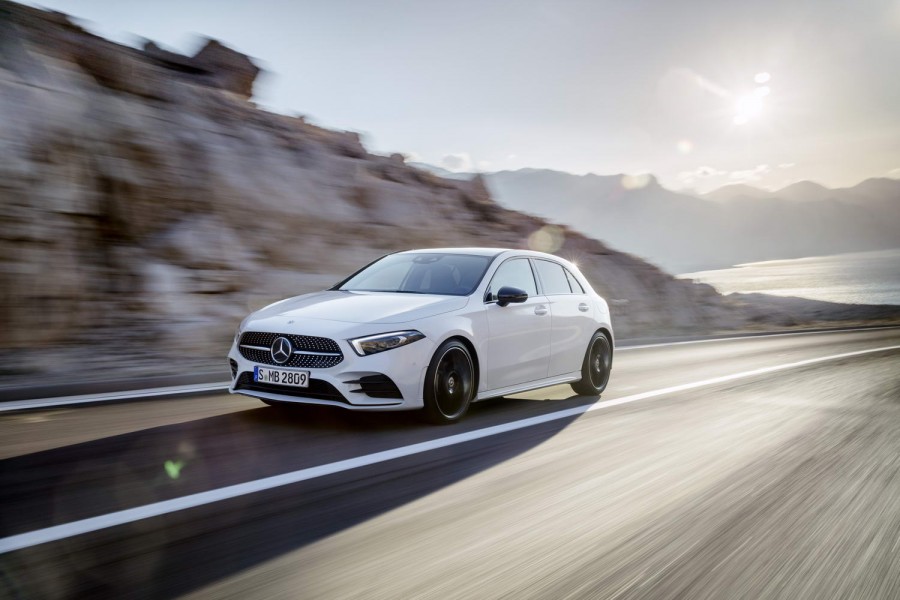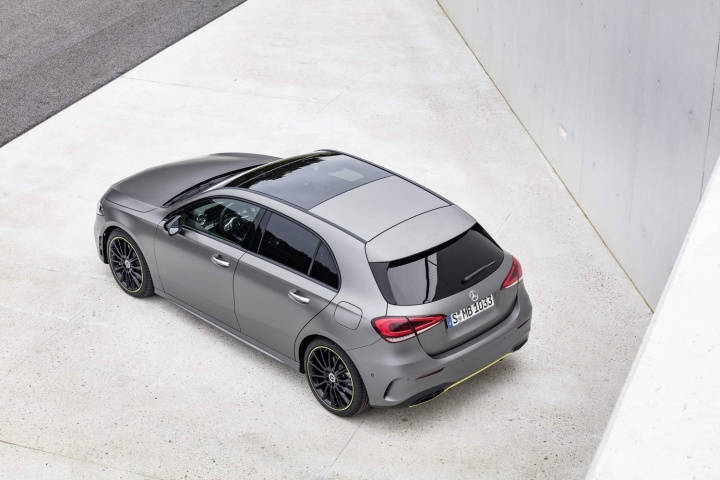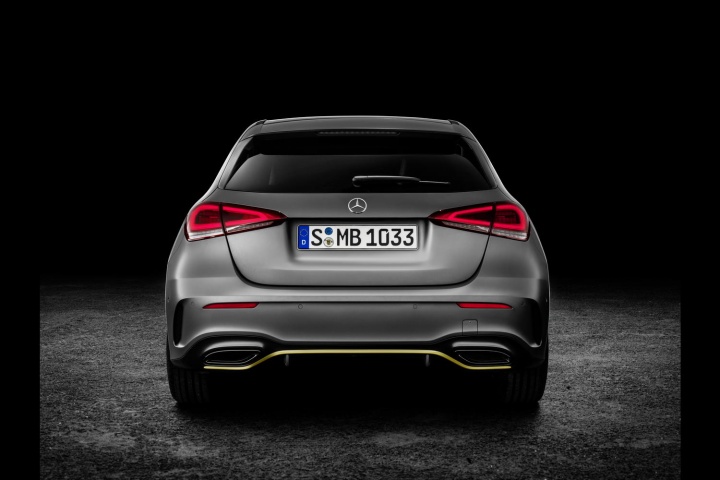What's the news?
The all-new, fourth-generation Mercedes-Benz A-Class has been revealed and the German company hopes to set new standards for luxury and technology in the premium hatchback segment. The new look gives the A-Class a sharper image on the outside, but it is inside where Mercedes has made the most significant improvements. Additionally, a range of new engines will bring a higher degree of efficiency to the line-up, while numerous driver assistance systems aim to not only make the A-Class a safer car, but one that is more advanced than its competition.
Exterior
Visually, the A-Class continues the new design language of Mercedes-Benz. We've already seen this on the new Mercedes CLS, setting the template for future models. A more sloping bonnet and low-set angular headlights place a greater emphasis on a wide grille that carries the signature Mercedes star, braced by a silver louvre across the middle. Distinctive LED daytime running lights line the inner and top edge of the headlights.
The exterior bodywork appears much tauter than its predecessor's, and Mercedes claims it to be the most aerodynamic in the segment with a coefficient of drag figure of 0.25. This is thanks in part to the 'Airpanel' louvre system behind the radiator that can open or close according to the engine's cooling requirements. A second louvre located below the front registration plate performs the same task.
The proportions add to the car's presence on the road, too. Its wheelbase grows by 30mm with front track width increasing by 14mm. Depending on the model, wheel sizes will vary from 16- to 19-inches, though Irish specifications have yet to be confirmed.
Interior
If the exterior seems somewhat evolutionary, then the interior stands out as something of a revolution. Some smart design moves add a greater sense of spaciousness to the cabin. Structural changes result in 9mm more shoulder room in the front and 22mm more in the rear, while elbow room grows by 35- and 36mm in the front and back respectively. On top of that, headroom increases by 7- and 8mm front and rear respectively. As per other models in the Mercedes range, the ambient lighting features a choice of 64 different colours for the cabin.
The single most significant change to the interior is the new dashboard design. In its highest specification, it comprises two 10.25-inch screen to create a gorgeous widescreen display in front of the driver. In all, there will be three versions, with the most basic model being made up of two seven-inch displays and a mid-level using one seven-inch and one 10.25-inch display.
Boot capacity measures in at 370 litres, an increase of 29 litres over its predecessor, but still leaves the A-Class still lagging behind segment rivals like the Audi A3 and Volkswagen Golf. A redesign of the aperture makes it 20cm wider than before, however.
Mechanicals
The A-Class will feature a range of new engines comprising of two four-cylinder petrol options with 1.4- and 2.0-litre capacities, and a new 1.5-litre four-cylinder diesel, which Mercedes developed in partnership with Renault. Power outputs will range from 116- to 224hp initially, with higher-performance AMG derivatives expected to follow in the future. Only the base A 200 will be offered with a six-speed manual gearbox. The more powerful A 250 and A 180 d diesel will feature a seven-speed dual-clutch automatic transmission. To keep the A-Class ahead of emissions regulations, both petrol engines will feature a particulate filter as standard while the diesel will use an AdBlue treatment system. The standard fuel tank measures 43 litres, but there will be a 51-litre tank option to give the car an extended driving range.
All-wheel drive will be available in the A-Class via the company's 4Matic system. Safety technology from the S-Class trickles down into the new A-Class, with Mercedes-Benz claiming it to have the highest level of active safety currently available in the segment. Some systems will be standard while others may be available as an optional extra, naturally.
More advanced camera and radar systems enable the car to see up to 500 metres ahead. The 'Active Lane Keeping Assist' system can pulse the steering wheel to alert the driver should they start to drift out of their lane at speeds of between 60- and 200km/h. In wet weather the 'Adaptive Brake' system briefly applies a small amount of braking force at regular intervals to clear any film of water that may build up on the surface of the brake disc, ensuring braking performance is at its optimum.
A Driving Assistance package features 'Active Distance Assist DISTRONIC', which can predictively adjust the car's speed when approaching bends and junctions. In start-stop traffic on motorways and clearly marked roads, the A-Class can stop for up to 30 seconds before moving off automatically to follow the traffic in front. Mercedes will equip all models will 'Active Brake Assist', which helps to mitigate rear-end collisions with vehicles in front. It can also recognise cyclists and pedestrians.
Anything else?
Another element of the new A-Class is what the company calls the MBUX - Mercedes-Benz User Experience. Essentially this covers all aspects of the infotainment system and associated technologies that aim to make how you interact with the car a better experience. A new voice control system that the user can activate by saying "Hey Mercedes", just like Siri on your iPhone or Alexa at home. It is engineered to understand normal speech patterns, so you can theoretically talk to it as you would a real person.
High-resolution graphics look vibrant and detailed on the 10.25-inch screens in the dashboard. Different menu screens allow the user to toggle through to the relevant information in a straightforward fashion, too. Numerous Mercedes me Connect services will be on offer in conjunction with smartphone connectivity and integration.
The new Mercedes-Benz A-Class will officially go on sale in March with customer deliveries beginning later in 2018. Irish pricing and specifications have yet to be announced.


